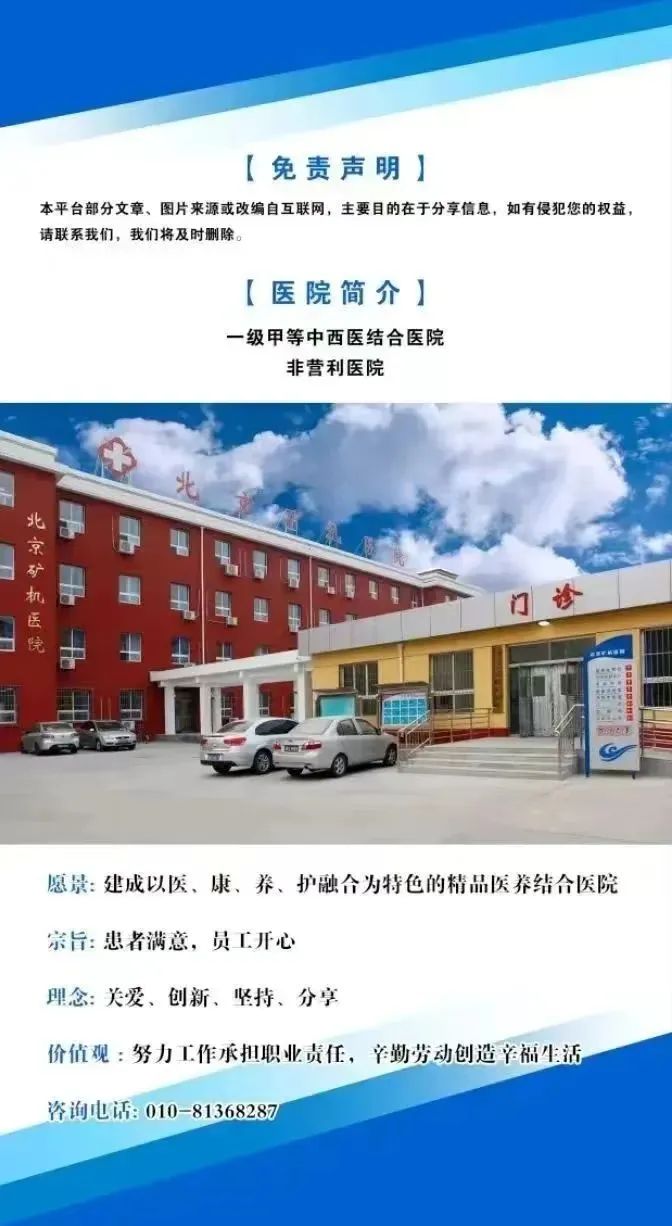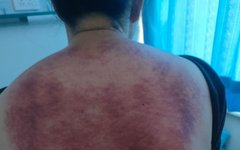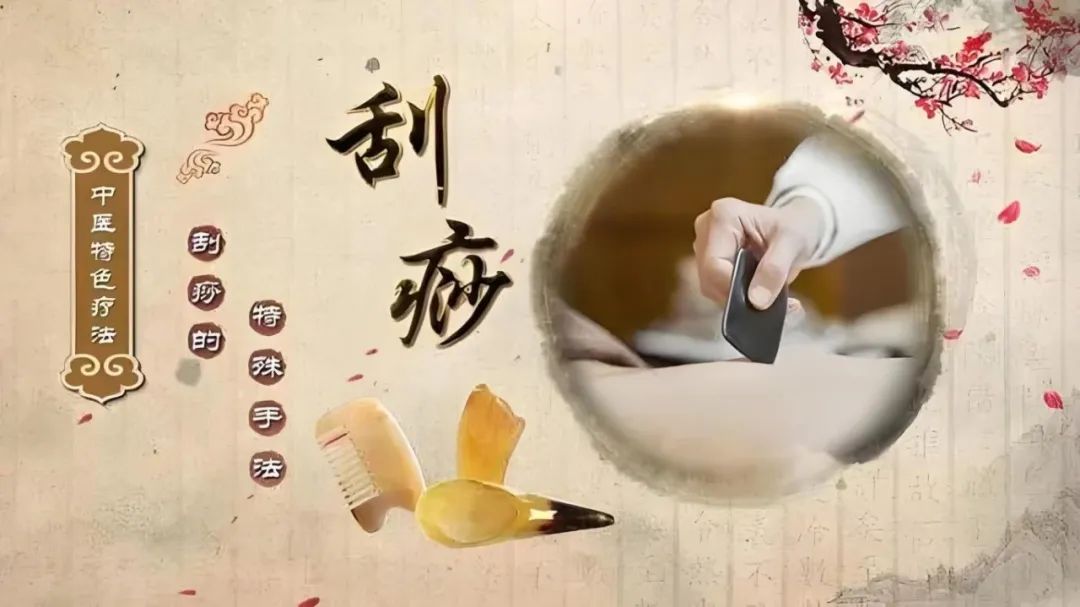
Gua Sha originated from folk practices and was first recorded in the Yuan Dynasty by the physician Wei Yilin in his work “Shi Yi De Xiao Fang”. Other medical texts also provide detailed accounts of the principles and methods of Gua Sha. For instance, “Sha Zhang Yu Heng” states: “The Gua Sha method involves scraping the back and neck, as well as the chest and sides, using a coin dipped in sesame oil.” Wu Shangxian in “Li Yue Pian Wen” noted, “For Yang Sha abdominal pain, nothing is better than using a porcelain spoon dipped in sesame oil to scrape the back, as the five organs are connected to the back; scraping will expel evil qi and relieve the illness.”
What is Gua Sha?
Gua Sha is a technique that uses specialized scraping tools, dipped in a certain medium, to repeatedly scrape and rub the skin surface, causing localized “sha” to emerge. This process aims to invigorate blood circulation, relieve muscle tension, detoxify, clear heat, promote qi flow, alleviate pain, and strengthen the spleen and stomach.
Traditional Chinese Medicine (TCM) believes that qi circulates continuously in the body, and the hub that governs the rise and fall of qi is called “qi mechanism”. Therefore, diseases related to qi are primarily due to the imbalance of the “qi mechanism”. Gua Sha focuses on regulating qi, stimulating the flow of qi and blood, expelling evils from the surface, and enhancing self-healing capabilities to treat diseases.
The skin is closely connected to the meridians, and Gua Sha stimulates the meridians on the body surface, promoting the unblocking of meridians, invigorating blood circulation, and regulating the qi and blood of the internal organs. According to modern medical explanations, the pores on the skin can release heat toxins and excrete skin toxins, as well as evaporate moisture. These pores serve as both treatment points and pathways for expelling illness. Gua Sha can enhance local blood circulation and stimulate the body’s immune response.
What is the “sha” that emerges from the body?
Those who have experienced Gua Sha know that the scraped areas often appear red, which is what we commonly refer to as “sha”.
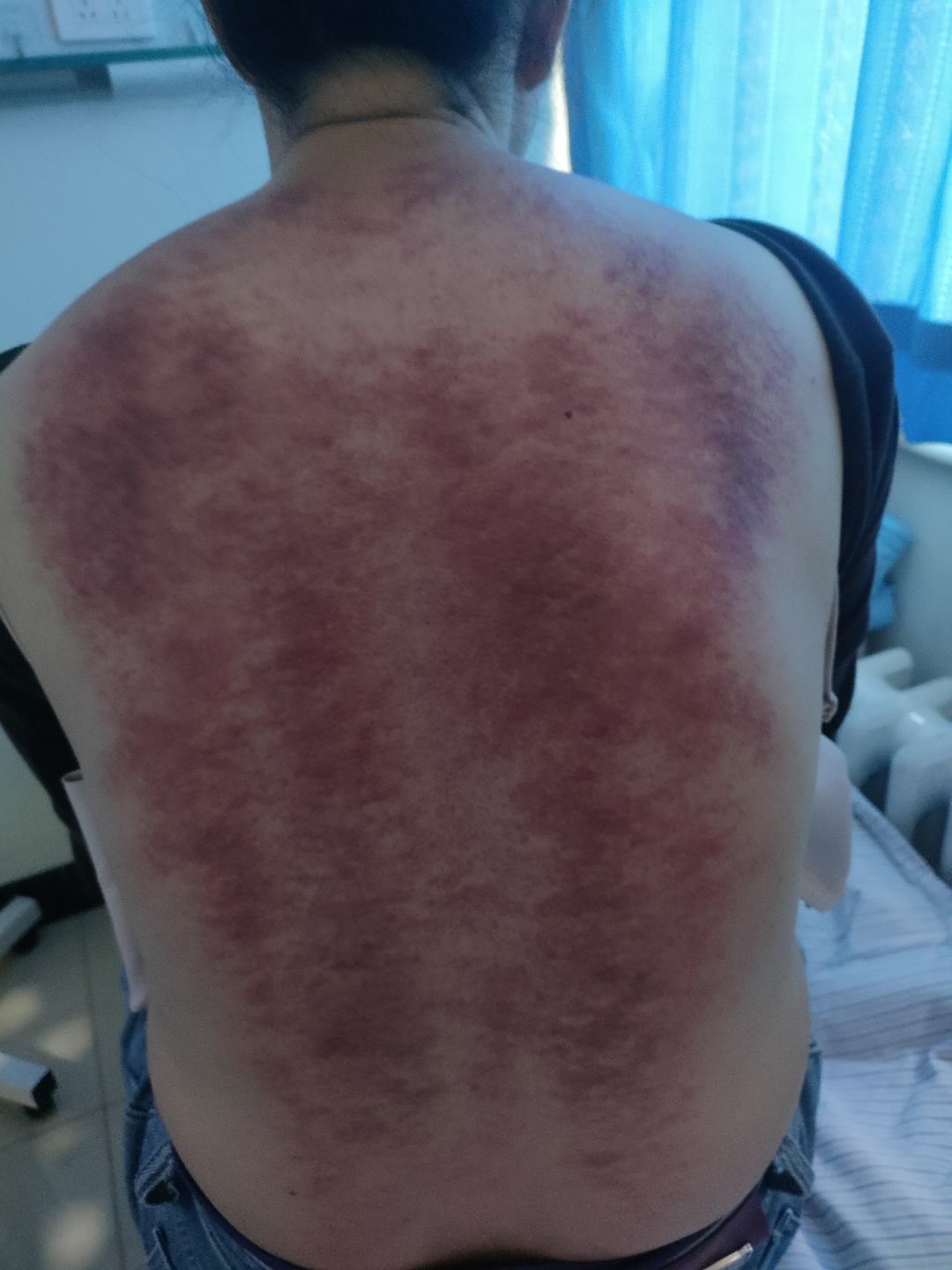
The process of “sha” emergence involves the dilation of blood vessels leading to the rupture of capillaries, resulting in blood leakage and the formation of bruises on the skin. The blood clots soon dissolve, producing a new irritant that not only adjusts immune function and enhances immunity but also regulates brain excitation and inhibition.
Individuals with significant dampness and coldness may experience more pronounced “sha” after Gua Sha.
Is more “sha” better during Gua Sha?
Different body constitutions yield different red marks from Gua Sha. It is incorrect to judge the effectiveness of Gua Sha solely by the quantity of red marks. Excessive force during Gua Sha may lead to more red marks. However, it is also incorrect to claim that Gua Sha is ineffective if no “sha” is visible, as it may simply be that the “sha” is not easily seen.
For certain special populations, Gua Sha is not recommended, such as individuals with fragile blood vessels, thrombocytopenia, or coagulation disorders. Blindly performing Gua Sha may lead to abnormal bleeding from blood vessels, which may appear as excessive “sha” but actually causes new harm.
Gua Sha Tools
Common Gua Sha tools include Gua Sha boards and Gua Sha oils.
Gua Sha boards can be made from materials such as horn, jade, or Bian stone; Gua Sha oils can be liquid or cream-based, and even plain water can be used to reduce pain during the scraping process and prevent excessive friction on the skin.
Who should avoid Gua Sha?
● Patients with skin diseases should avoid Gua Sha therapy; those with edema, diabetes, and heart disease should refrain from Gua Sha;
● Patients with hemophilia, purpura, and other bleeding disorders cannot undergo Gua Sha treatment;
● Patients with low blood pressure, low blood sugar, extreme weakness, and those particularly sensitive to pain should use gentle scraping techniques;
● Pregnant women and infants should be cautious with Gua Sha;
● Those who are overly hungry, overly full, or excessively fatigued should avoid Gua Sha.
Precautions during Gua Sha1. Alcohol consumption is prohibited 24 hours before and after Gua Sha; intoxicated individuals should avoid it.
1. Alcohol consumption is prohibited 24 hours before and after Gua Sha; intoxicated individuals should avoid it.
2. Gua Sha is not suitable when overly full or too hungry;
3. Do not scrape the nipples or genital areas;
4. Avoid scraping on areas with skin ulcers;
5. For individuals with long-term lower body stagnation, such as constipation, be cautious when scraping abdominal points to prevent qi from rising;
6. Wait three hours after Gua Sha before bathing. This is because Gua Sha requires opening the back, and bathing immediately afterward may allow cold and dampness to enter the body. It is better to wait until the skin’s pores have closed completely before bathing.
7. There is no need for special treatment for the “sha” marks that appear after Gua Sha; it is normal for the skin in the scraped area to feel painful and hot;
8. If fainting occurs during Gua Sha, lay the person down, ensure the room is ventilated, and press the Neiguan (内关) or Jiquan (极泉) points until they recover, which may involve cold sweat, diarrhea, or vomiting;
9. After Gua Sha, cover the back with clothing to prevent cold evils from invading the skin.
 Physician IntroductionDong WunüTCM Physician
Physician IntroductionDong WunüTCM Physician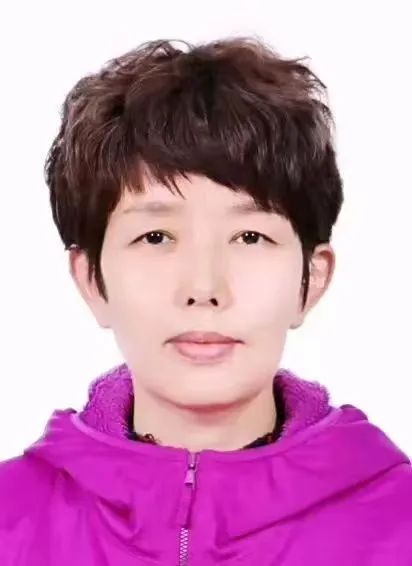
With 17 years of experience in acupuncture, tui na, cupping, Gua Sha, bone setting, and auricular therapy, I utilize Huangdi Neijing acupuncture and auricular therapy to address various conditions, accurately selecting points for significant results!
Specialties:
Pain conditions: herpes and post-herpetic neuralgia, various headaches, stomach pain, pharyngitis, neck, shoulder, waist, and leg pain, etc.
Various geriatric diseases: chronic leg pain, dizziness, insomnia, sequelae of stroke, etc.
Beauty and body: acne, melasma, obesity, etc.
Gynecological and male diseases: cervical erosion, pelvic inflammatory disease, prostatitis, frequent urination, breast hyperplasia, etc.
Pediatric tui na: pediatric anorexia, adenoid hypertrophy, allergic rhinitis, allergic cough, low immunity, etc. (Served as the technical director of a pediatric tui na chain store for two years)
Consultation Location: Acupuncture Department, First Floor Outpatient Clinic
Consultation Phone: 010-89337257 ext. 5102
